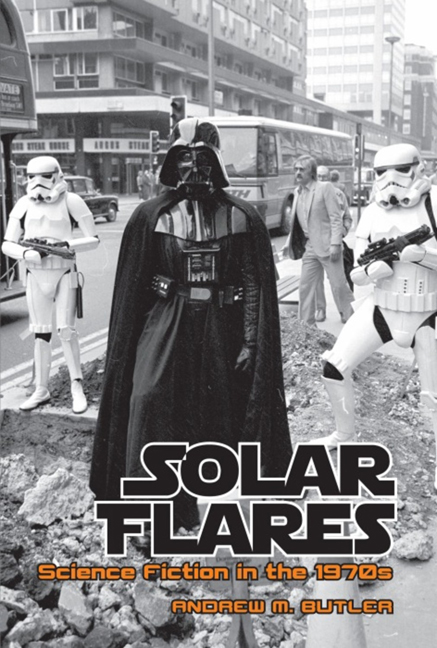Book contents
- Frontmatter
- Dedication
- Contents
- Acknowledgements
- Prologue
- 1 The Ends of First Sf: Pioneers as Veterans
- 2 After the New Wave: After Science Fiction?
- 3 Beyond Apollo: Space Fictions after the Moon Landing
- 4 Big Dumb Objects: Science Fiction as Self-Parody
- 5 The Rise of Fantasy: Swords and Planets
- 6 Home of the Extraterrestrial Brothers: Race and African American Science Fiction
- 7 Alien Invaders: Vietnam and the Counterculture
- 8 This Septic Isle: Post-Imperial Melancholy
- 9 Foul Contagion Spread: Ecology and Environmentalism
- 10 Female Counter-Literature: Feminism
- 11 Strange Bedfellows: Gay Liberation
- 12 Saving the Family? Children's Fiction
- 13 Eating the Audience: Blockbusters
- 14 Chariots of the Gods: Pseudoscience and Parental Fears
- 15 Towers of Babel: The Architecture of Sf
- 16 Ruptures: Metafiction and Postmodernism
- Epilogue
- Bibliography
- Index
12 - Saving the Family? Children's Fiction
- Frontmatter
- Dedication
- Contents
- Acknowledgements
- Prologue
- 1 The Ends of First Sf: Pioneers as Veterans
- 2 After the New Wave: After Science Fiction?
- 3 Beyond Apollo: Space Fictions after the Moon Landing
- 4 Big Dumb Objects: Science Fiction as Self-Parody
- 5 The Rise of Fantasy: Swords and Planets
- 6 Home of the Extraterrestrial Brothers: Race and African American Science Fiction
- 7 Alien Invaders: Vietnam and the Counterculture
- 8 This Septic Isle: Post-Imperial Melancholy
- 9 Foul Contagion Spread: Ecology and Environmentalism
- 10 Female Counter-Literature: Feminism
- 11 Strange Bedfellows: Gay Liberation
- 12 Saving the Family? Children's Fiction
- 13 Eating the Audience: Blockbusters
- 14 Chariots of the Gods: Pseudoscience and Parental Fears
- 15 Towers of Babel: The Architecture of Sf
- 16 Ruptures: Metafiction and Postmodernism
- Epilogue
- Bibliography
- Index
Summary
Thomas M. Disch argues that ‘science fiction is a branch of children's literature’ (1976: 142), in the sense that, like children's literature (as he perceived it), sf was limited in intellectual, emotional and moral terms. Magazine sf and the chapter serials had both teenaged and adult audiences, even before the invention of the category of the teenager in the 1950s. Robert A. Heinlein's early novels were published as juveniles as books, but Scribner's felt that Starship Troopers (‘Starship Soldier’ F&SF October– November 1959; 1959) had too much strong material for child readers. The perception that sf avoided sexuality and romance may have facilitated a wide age-range among readers, and it is arguably the shift to more adult themes in the 1960s and 1970s that created a space for more genre fiction explicitly aimed at children. In addition to Heinlein, Isaac Asimov and Ray Bradbury also wrote for children and adults – the latter's The Halloween Tree (1972) and some of his story collections were marketed for children. At the same time, children's literature also changed, with the emergence in the mid- to late 1960s of the Young Adult novel. This chapter will consider novelisations for children of sf film and television, stop-motion animations, animated and live-action Disney films, novels for children by Roald Dahl and Andre Norton and for teenagers and young adults by Alan Garner, Ursula Le Guin, Robert C. O'Brien, H.M. Hoover and Jan Mark.
But children's science fiction remains a problematic term – for a start, the possessive apostrophe of the first term suggests a misleading degree of ownership, given that editors, bookshops, librarians, teachers and parents all act as gatekeepers controlling a child's access to books (Zipes 2001: 39–60), and similar mechanisms are in play for film, television and games. The notion of the child – effectively conceived during the Enlightenment by authors such as Jean-Jacques Rousseau – is also problematic, and in practice marketing of books is based on clusters of age groups.
- Type
- Chapter
- Information
- Solar FlaresScience Fiction in the 1970s, pp. 168 - 180Publisher: Liverpool University PressPrint publication year: 2012



